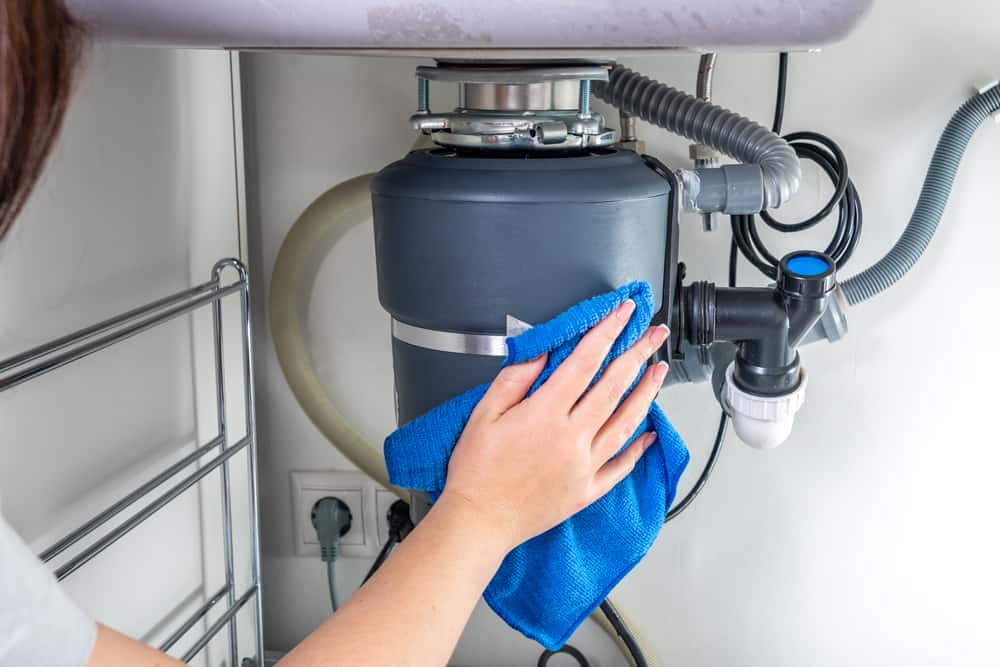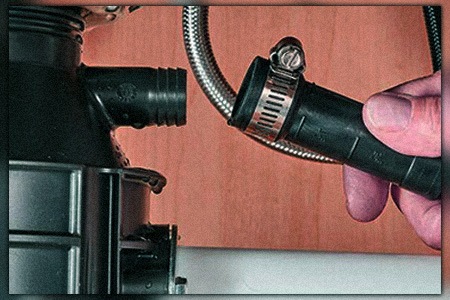Quick Fixes for a Dripping Garbage Disposal
Quick Fixes for a Dripping Garbage Disposal
Blog Article
The article author is making a number of great pointers on How to fix a pretty consistent leak from my garbage disposal overall in the article just below.

Waste disposal unit are essential cooking area appliances that assist in taking care of food waste efficiently. Nevertheless, a dripping garbage disposal can be an irritating and untidy trouble to deal with. Fortunately, several leaks can be fixed easily with a few simple actions. In this article, we will certainly go over just how to fix a dripping waste disposal unit successfully.
Intro
Waste disposal unit are installed under cooking area sinks and are developed to shred food waste right into smaller sized pieces, allowing it to go through the plumbing system easily. While these tools are generally reputable, leakages can happen gradually because of deterioration, loosened connections, or damage to the unit.
Usual Reasons For Leakages in Waste Disposals
Worn Seals and Gaskets
Seals and gaskets play an essential function in protecting against water from dripping out of the waste disposal unit. Over time, these components can weaken, resulting in leaks around the disposal unit.
Loose Links
The connections in between the waste disposal unit and the plumbing system can become loose with time, triggering water to leak out during procedure.
Fractures or Holes in the Disposal Device
Physical damage to the waste disposal unit, such as fractures or openings in the real estate, can also lead to leaks.
Determining the Resource of the Leakage
Prior to trying to deal with a leaking garbage disposal, it is vital to determine the resource of the leak. This can usually be done via visual examination or by performing basic tests.
Visual Examination
Examine the garbage disposal device very carefully for any indications of water leak. Pay very close attention to locations around seals, gaskets, and link points.
Examining for Leakages
One way to evaluate for leakages is by running water with the disposal device and checking for any visible indications of leakage.
Tools and Materials Needed for Dealing With a Leaking Waste Disposal Unit
Prior to starting the repair work procedure, collect the needed devices and materials, consisting of a screwdriver, flexible wrench, plumbing technician's putty, replacement seals or gaskets, and epoxy or patching product for fixing fractures or openings.
Step-by-Step Guide to Repairing a Leaking Waste Disposal Unit
Shut off the Power
Prior to attempting any fixings, make sure that the power to the garbage disposal device is shut off to prevent the danger of electrical shock.
Find the Leak
Identify the specific area of the leakage and figure out the cause.
Tighten up Connections
Use a wrench to tighten any kind of loose links between the disposal device and the plumbing system.
Replace Seals or Gaskets
If the leak is because of used seals or gaskets, get rid of the old components and replace them with new ones.
Patching Splits or Holes
For fractures or openings in the disposal unit, usage epoxy or an appropriate patching material to seal the damaged area.
Evaluating the Waste Disposal Unit After Repair Service
Once the repair service is complete, test the garbage disposal by running water via it to ensure that the leak has been fixed.
Preventive Upkeep Tips to Prevent Future Leakages
To avoid future leakages, it is necessary to carry out routine upkeep on your garbage disposal. This includes maintaining it clean, avoiding placing non-food things or tough objects down the disposal, and regularly checking for leaks or other issues.
Conclusion
In conclusion, taking care of a dripping waste disposal unit is a fairly straightforward procedure that can be finished with standard devices and products. By adhering to the actions laid out in this write-up and practicing precautionary upkeep, you can keep your waste disposal unit in good working problem and avoid expensive repair services in the future.
What to Do About a Leaking Garbage Disposal
A leaking garbage disposal often goes unnoticed until you confront a sopping cabinet, a foul-smelling puddle, or an audible drip-drip-drip from the unit. The fix can be frustrating, too, because the leak can stem from a number of components in the system. Fortunately, with a little sleuthing, you can zero in on the leak and—depending on the exact location—stop the icky oozing and repair the component that caused it. Worst case scenario, if it turns out that the garbage disposal must be replaced, installing a new one is a reasonable do-it-yourself task for those with basic plumbing skills. Read on to keep the cash you’d otherwise hand over to a pro.
Prepare to find the leak
Prior to testing the garbage disposal for leaks, unplug it at the wall outlet and turn off the power from the breaker box to prevent electrical shock. Then insert a watertight sink stopper into your sink drain and wipe the unit dry with a clean cloth. In any handy container, mix a few drops of food coloring into a few cups of water, and pour the dyed water onto the sink stopper to help you locate the leak.
Investigate the source
the top, where the disposal meets the sink drain the side, where the dishwasher hose or main drain pipe connects to the disposal or the bottom of the unit Inspect each of these locations while gliding a light-colored rag over the unit; the dyed water will readily show on the rag and reveal the location of the leak. If a leak isn’t immediately apparent, remove the sink stopper and pour a few more cups of dyed water down the sink drain, then check for leaks again. Leaks near the top of the unit are more likely to show themselves while the sink is plugged, while side and bottom leaks are more noticeable while the sink is unplugged.
The metal sink flange that sits directly inside the sink drain is typically sealed around the top with plumber’s putty (a clay-like sealant) and then secured from under the sink with bolts. If the plumber’s putty deteriorates, or the bolts loosen, the flange can no longer form a watertight seal between the sink drain and the disposal—which could cause a leak at the top of the unit.
To reseal the leaky flange, you must first detach the garbage disposal. Start by loosening the screws securing the main drain pipe to the disposal, then loosen the screws in the metal clamp securing the dishwasher hose to the disposal and detach the drain pipe and dishwasher hose from the disposal. Loosen the screws in the mounting ring that connects the disposal to the metal mounting assembly beneath the sink, then pull down the disposal and carefully set it on a clean, dry surface. Loosen the bolts in the mounting assembly with a wrench, then pull down the mounting assembly and set it near the disposal.

I stumbled upon that blog entry on How to fix a pretty consistent leak from my garbage disposal when browsing on the web. Sharing is good. Helping people is fun. Thanks so much for taking the time to read it.
Try Here Report this page